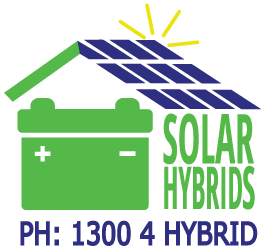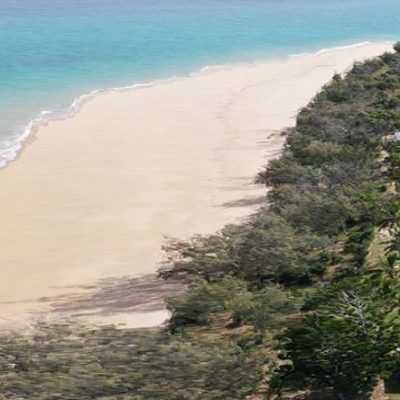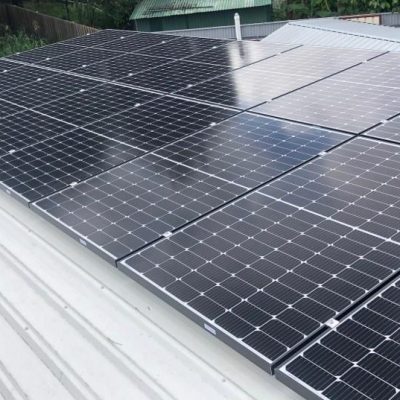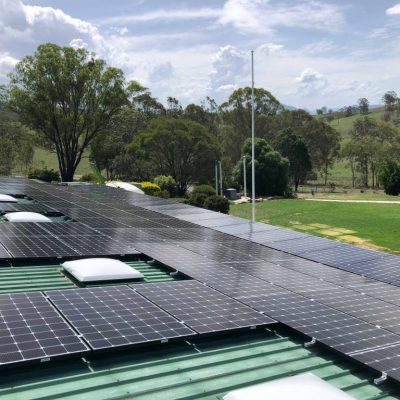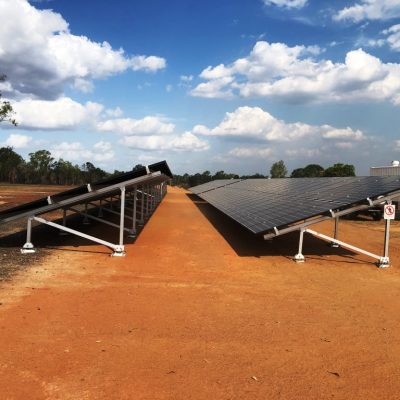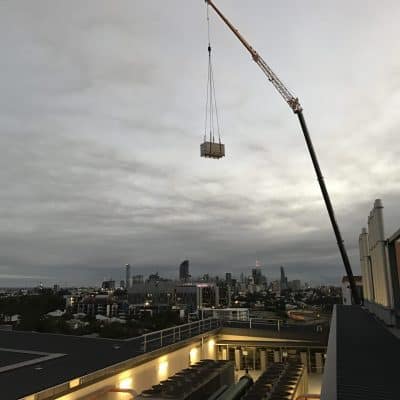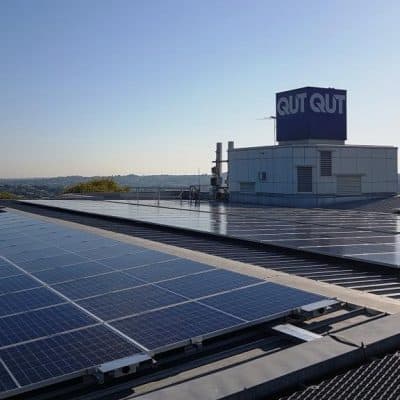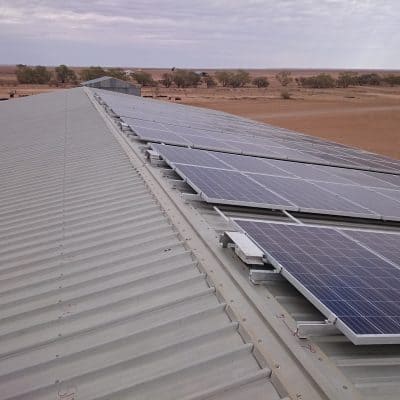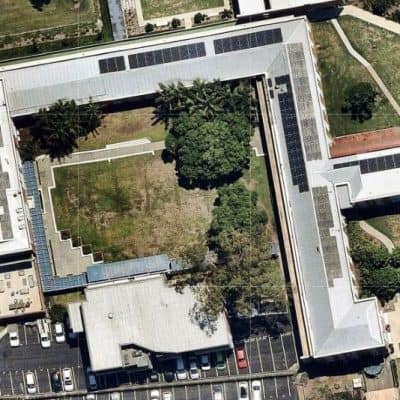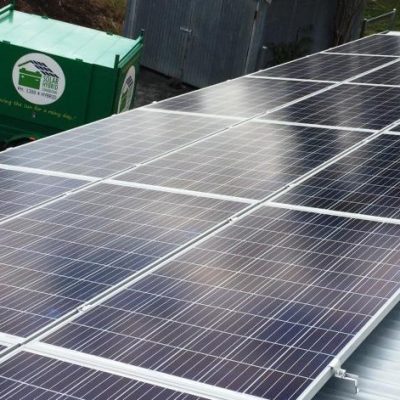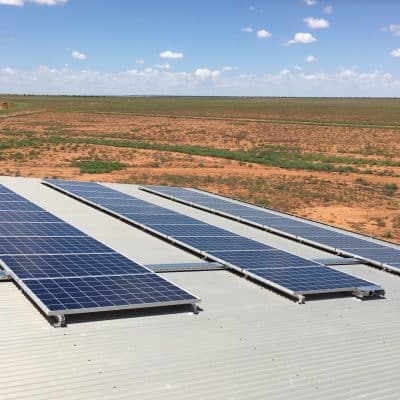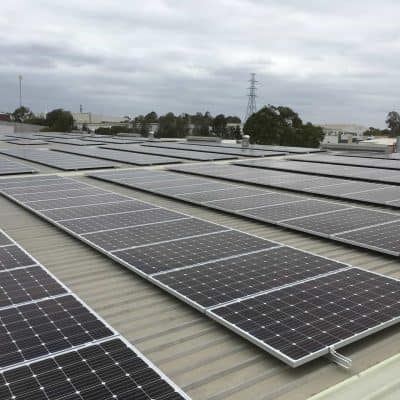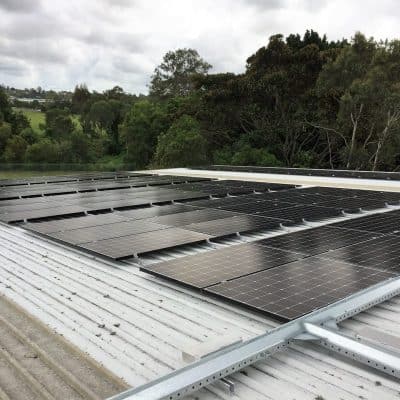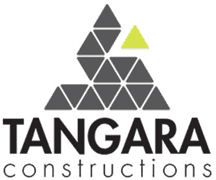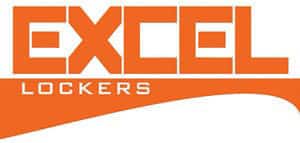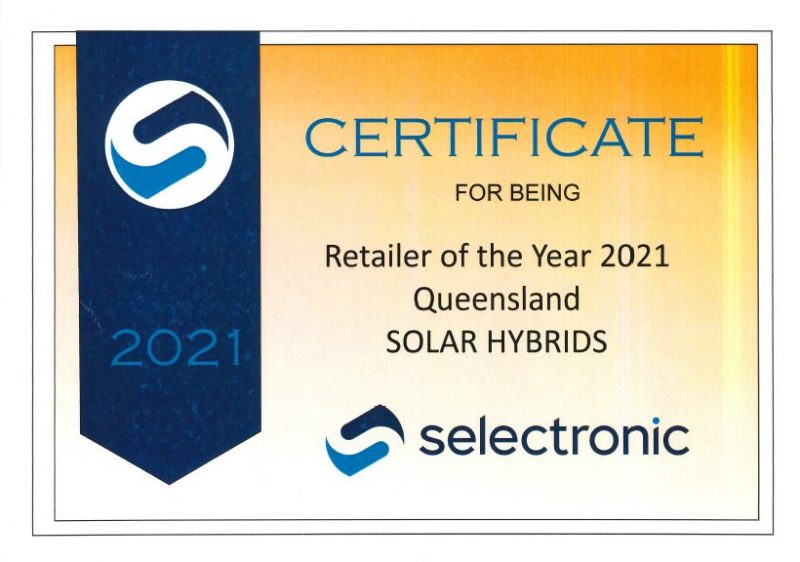Module Level Power Electronics (MLPE), is the collective term for AC microinverter and DC Power Optimiser solar systems. These types of solar systems are more complex than traditional DC solar systems with string inverters, but come with a whole range of additional features and benefits which are explained in detail below.
SOLAR HYBRIDS offers both traditional grid connected String inverter systems as well as MLPE Solar Systems using AC micro inverters & DC Optimisers; both have advantages and disadvantages over one another, some of which only affect the installer, but a basic understanding of the workings of each type of technology will help you, the consumer, decide which system is best suited to your needs.
Micro Inverters & DC optimisers versus traditional DC solar systems
Traditional DC Solar Systems
Traditional grid connected DC solar systems typically have one or more wall-mounted inverter, often referred to as a Central or String inverter, which is usually mounted on the wall near your property’s switchboard. These systems are quite simple in terms of the amount of componentry, but due to their problematic nature which is discussed in detail below, the design of these systems can be quite complex, and if not done correctly by an experienced professional, the result can lead to an under-performing and disappointing system.
Advantages
- Cheaper: The initial cost for these systems is however considerably cheaper than micro inverter or DC optimised systems, which is their main advantage.
- Easily replaceable inverter: The second main advantage is that in the event of an inverter failure, the string inverter is usually in an easily accessible location, allowing for a quick, safe, and easy replacement, often achievable by one person only.
Disadvantages
- Dangerous high DC voltages: In traditional DC string solar systems, the solar panels are electrically connected together in series to form an array or arrays which are known as ‘strings’. It is quite common for an installation to consist of just one string, and the resultant lethal DC voltage is typically between 300 to 600V DC for a domestic installation, and much higher for larger commercial solar systems. The main problem with DC voltages in solar systems is that they cannot be circuit protected like regular 240V AC circuits, as the DC circuit is designed to operate at the full short-circuit current of the solar panels. This means that in the event of a DC arc forming as a result of vermin chewing through the insulation of the DC wiring for example, at no point will any circuit breaker trip; the arc will continue to grow and potentially cause a fire. To combat this threat, legislation introduced in Australia in late 2012 in the form of Australian Standards AS5033 has addressed this issue somewhat by stipulating that all new installations of grid connected DC solar systems must have their DC wiring entirely enclosed within Heavy Duty conduit when run internally, in order to better protect the cabling.
- The Christmas light effect: We are all familiar with the problems with Christmas lights; if one bulb blows, the entire string goes down. This is the same for traditional DC solar systems; if one solar panel fails, the entire ‘string’ or array stops working. And the bad news doesn’t stop there…if just one panel is partially shaded and only producing 50%, potentially the entire array could only produce 50%. The system is therefore only as strong as its weakest link. Bypass diodes within solar panels can sometimes assist in these circumstances, but are often ineffective. Complete failure of an array is quite easily detectable by the system owner, but what about a partial failure of a solar panel resulting in a total system power degradation of 10 or 20%? The system owner may never be aware of it, and has no system monitoring capability at the individual module level. And if a problem was suspected, an electrician may have to test every solar panel in order to find the problem; this could be quite time consuming and expensive, especially on large commercial installations consisting of hundreds or thousands of solar panels.
- Array Layout Design: Due to the phenomenon described above, every solar module in a string must have the same orientation and tilt, and often must have the same number of solar modules as every other string in the system. A certain number of solar panels is also required to make up a string; too few and the overall voltage of the string is too low for the string inverter to operate. Too many, and the inverter may burst into flames and void warranty! These constraints can make the physical layout and stringing design of a DC solar system difficult, often resulting in fewer panels and wasted available roof space.
- Higher maintenance costs: Traditional DC solar systems require higher maintenance costs in order to keep the system operational for the lifetime of the solar panels. These costs are usually associated with inverter replacements and subsystem component failures such as rooftop DC isolators and string fuses.
Micro Inverter solar systems
Grid connected micro inverter solar systems, also referred to as AC solar systems or Intelligent solar systems, differ radically to traditional DC solar systems via the elimination of the ‘string’ inverter concept and instead, have a small inverter known as a micro inverter installed under each and every solar panel in the installation. This enables many previously only dreamed of features and advantages over traditional DC solar systems, and eliminates virtually all of the major problems associated with those systems. These advancements obviously come at a cost, and micro inverter systems also have other disadvantages that are avoided by traditional DC solar systems.
Advantages
- Safer: The system does not employ dangerous, unprotected high DC voltages, eliminating the risk of potential fires as outlined above. The system’s cabling through the roof to your switchboard is regular 240 AC, the same as all other household cabling, and is circuit protected via a circuit breaker in your switchboard.
- Shade tolerant and fault redundancy: Each solar panel operates independently, as it has its own dedicated micro inverter. The result is that the system does not suffer from the ‘Christmas light effect’ explained above; one shaded or soiled panel will result in a loss of power from that panel only, and will not drag down the performance of the others. The same goes for any fault; in a traditional DC solar system, a complete failure of a solar panel or central string inverter will usually result in an entire system failure.
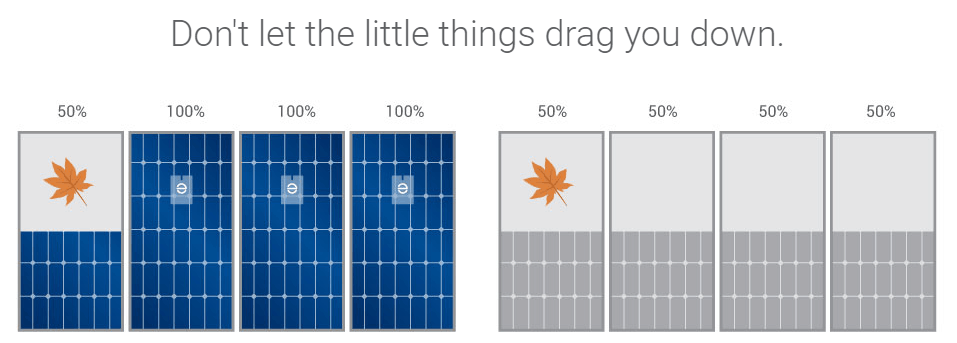
- Longer warranties: Microinverters have a minimum standard warranty of 10 years, as opposed to only 5 years for most string inverters. Even the best European made string inverter manufactures freely admit that in the life-time of your solar panels you will need to replace your string inverter at least once. The reasons why micro inverters have a longer life expectancy and warranty is due to radical differences in the electronic componentry; some microinverter have warranties in excess of 20 years. String inverters deal with kilowatts of power and high DC input voltages typically ranging from 300V to 1000V DC. As a result, these types of inverters require electrolytic capacitors and high power transistors – components that tend to give up the ghost after 5 years of constant operation. Micro inverters however, are only dealing with around 300 watts max of power and only around 40V DC, subsequently avoiding the need for troublesome electronics, and instead employ breakthrough thin-film capacitor technology and solid state ICs which make a 10 year warranty and beyond a reality.
- Extra electricity yield: Micro inverter solar systems boast higher average long term electricity yields between 5 to 25% more than traditional DC solar systems. This is due to a number of reasons including:
- Shade tolerance and fault redundancy as explained above,
- Individual Maximum Power Point tracking (MPPT) of each solar panel,
- Lower de-rating of output power at high temperatures,
- Less down-time due to higher system reliability,
- Lower operational DC input voltages, meaning that at first light, the micro inverters will produce power long before a traditional central string inverter will. Similarly at last light.
- Real-time individual panel monitoring: Internet based, the system owner is able to log on from anywhere in the world and view the performance of each and every single solar panel on their roof in real-time. The installation company as well as the inverter manufacturer are also able to do this. Technical support is therefore readily available and any faults are relatively easily detected and often undisputable. The larger the system the more advantageous this feature, as far less on-site troubleshooting is required in order to find a potential fault with a solar panel. In a traditional DC solar system, any suspected fault with a solar panel may result in an electrician having to disconnect and test each and every solar panel in order to find any suspected fault.
- Easily expandable: The system size is not ultimately dictated by the capacity of a string inverter, allowing for additional panels to be added at any time and only limited by your roof space and budget.
- Flexible and simple system design: Unlike traditional DC solar systems, the design for micro inverter solar systems is relatively simple and overall flexible. Solar panels employing micro inverters can be positioned to face several different directions in the one installation, and at several different tilt angles without any system parameter limitations, making the design almost child’s play. For split level, multi-gabled, multi-angled, and multi-pitched rooves, this design flexibility can mean the difference between having a well-working micro inverter solar system installed, or no system at all.
- No unsightly inverter on your wall: This is a small point but one worth mentioning nonetheless. All string inverters also radiate heat and many generate undesirable noises such as humming, buzzing or whirling from cooling fans
Disadvantages
- Cost: The initial cost for a micro inverter solar system can be considerably higher than that of a quality traditional DC solar system.
- Requires an Internet connection: Although the system will still produce power, without an internet connection and a computer or smart phone, many of the advantages and benefits of the micro inverter system are moot.
- More difficult to replace a micro inverter: In the event of a failure of a micro inverter, the electrician will need to climb on the roof and remove a solar panel in order to change out the micro inverter. In some scenarios roof access may be difficult; this may result in a costly, time consuming exercise.
DC Optimised Solar Systems
DC Optimised Solar Systems share most of the benefits and features of an AC micro-inverter system. Although the solar array is in series producing high DC voltages of up to around 800V DC, they are known as ‘Safe DC’ solar systems. These systems still have wall mounted string inverters, but in the event that a DC cable in the roof becomes damaged or disconnected, the system’s inherent safety mechanisms ensure that the high DC voltage from the solar array is automatically cut to a low, safe DC voltage which is also current limited. This is achieved via a DC optimiser installed beneath each and every solar panel, in a very similar manner to an AC microinverter solar system. These optimisers are what also allow system monitoring at an individual panel level in real-time, in the same way that a microinverter system does. Many of the other advantages listed above such as shade tolerant & fault redundancy, longer warranties, extra electricity yield, flexible & simple system design, are also available to DC Optimised Solar Systems.
Summary
So which type of system is best for you? We would all like a chauffeur-driven Rolls Royce, but most of us have to settle for something a little less extravagant, and drive it ourselves. If budget constraints are a major factor in your decision, than perhaps a traditional DC solar system is the way forward; after all, solar power in any form is a step forward in the long run, both economically and environmentally. However, a smaller than perhaps desired MLPE system (micro-inverter or DC Optimiser) should also be considered if your budget is tight, as the system can easily be added to later. If you do not have a computer or internet, then a traditional DC solar system may be the way to go, as many of the advantages and benefits of an MLPE system would be null and void. If you are considering obtaining an internet connection at your property just for the purpose of having an MLPE system, then you should also factor in the ongoing internet costs of the system when considering the return on investment.
If you have partial shading on your roof however, then an MLPE system is the clear choice, as a cheaper traditional DC solar system may not work very well at all under such circumstances. If you have a difficult roof (i.e. a combination of split level, multi-gabled, multi-angled, and multi-pitched), then an MLPE solar system may be the only option you have. And if you have concerns about safety, something of which is very difficult to put a price on, then an MLPE system should be given great consideration.
Whichever type of system you choose, quality components should always be on your agenda. Always keep in mind that not all solar panels are created equal, and the same goes for central & string inverters, microinverters, and DC optimisers. Take the time to research the product and the company selling or installing it. After all, you are not buying a tooth brush; few can afford to simply throw it out when it stops doing the job and buy a new one.
To view our range of string inverters, microinverters and DC optimisers, see our Products page.

Above left: A microinverter installation before the solar panels are clamped down. Above right: On-line monitoring showing the real-time power of every solar panel in a commercial installation.
